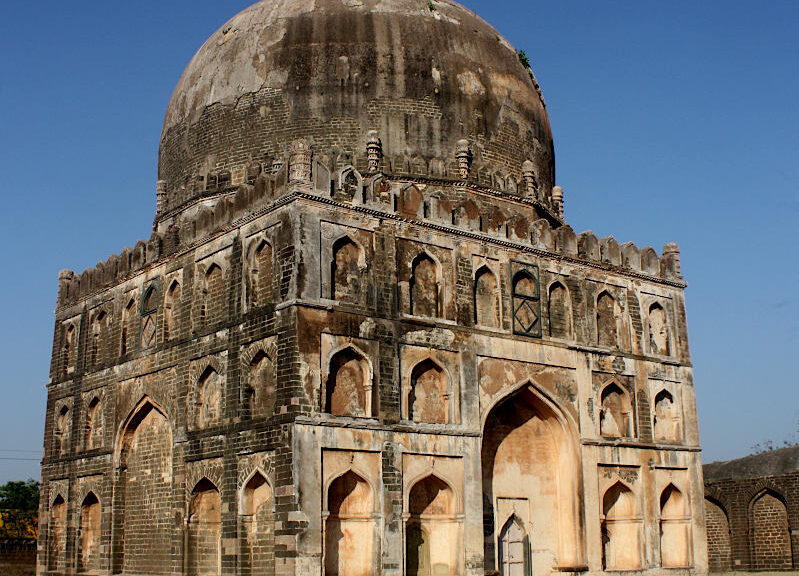
Bidar
After a four year hiatus, I was back in India. This time, I was to explore northern Karnataka concentrating on the architecture of the Deccanni sultanates and the Hindu kingdom of Vijayanagar, finishing up with a few days in Goa. First up was Bidar, now a small town in the middle of nowhere but formerly the capital of a great Muslim kingdom of the 15th and 16th centuries.
It was a bit of trek to get there because as it was my first destination in India, I flew in to Mumbai then a connecting flight to Hyderabad and then the easiest and quickest way to get there was a taxi from the airport. Fortunately in India a taxi ride of 150kms is not overly expensive – £50 for the two and a half hour trip. So, 28hrs after leaving my home in Portugal, I checked into the Sapnaa International Hotel in Bidar. Don’t be fooled by the international moniker, but at least it was clean.
The blokes at the hotel were friendly but spoke no English as foreign tourists rarely come here. Surprising as there are plenty of interesting monuments. As expected, Bidar town was less than salubrious. At least the main streets were wide but with only rubble to serve as pavements. I headed down the street in search of the Baridi tombs. I saw a sign for the Barid Shahi Garden and headed in. In retrospect I should have gone to another, more famous tomb across the road – the Ali Barid tomb but somehow couldn’t find it – maybe it was jet lag. Anyway, the Barid Shahi garden was interesting and featured the tomb of Qasim Barid I from the early 16th century. I also arrived at the same time as a bus load of schoolies so was subject to a host of selfies and an incessant chorus of “What is your country?” It was good natured and the lads are always friendly and happy.
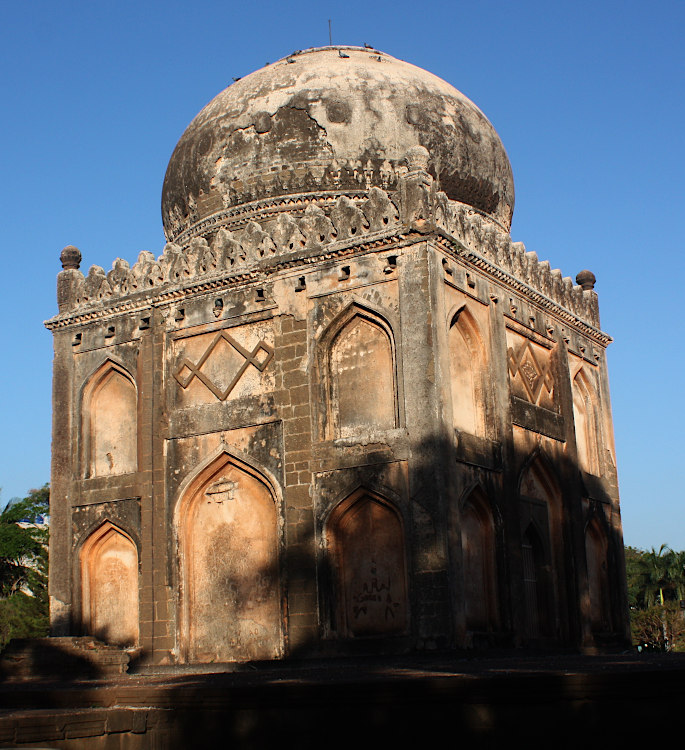
On the way back from the tombs I came upon a parade. Quite a common occurrence in India but I have no idea of the purpose of this one.
Getting out and about as soon as I arrived in Bidar was a good idea as I went to bed at 8pm and slept right through for 12 hours thus pretty much combating jet lag. I was surprised that at 9am the following day everything was still very quiet and town hadn’t really woken up. However just outside the hotel there was a mobile idly cart so I had a good breakfast. I then got an autorickshaw to the jewel of Bidar, Bidar fort.
It truly is enormous, over a kilometre in diameter. A lot of it is in ruins but the most complete buildings are near the South East corner by the two main gates. The outer one, the Sharza Darwaza and the inner one, the Gumbaz Darwaza. They are separated by a causeway across a broad moat. The walls were truly imposing even now hundreds of years after the fort had been destroyed.

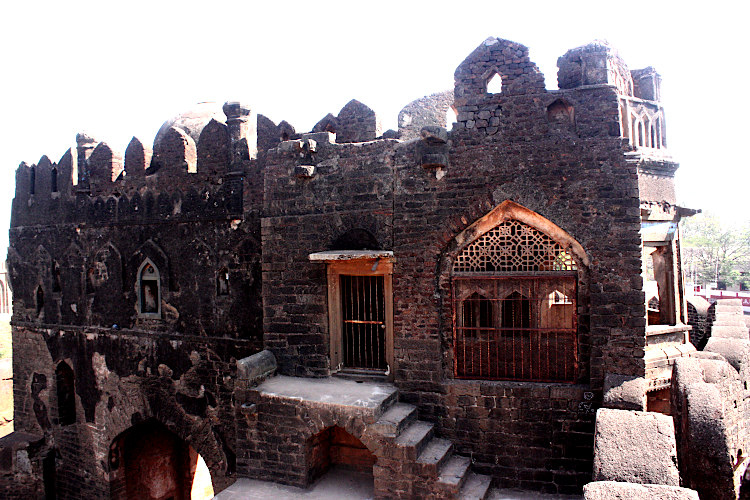
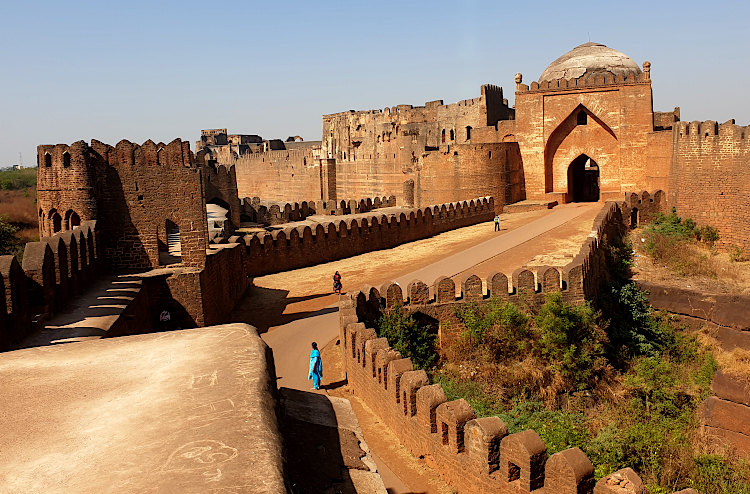
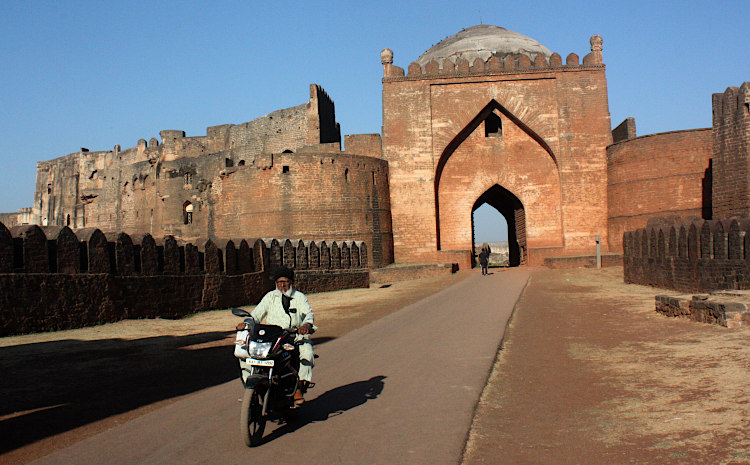
:
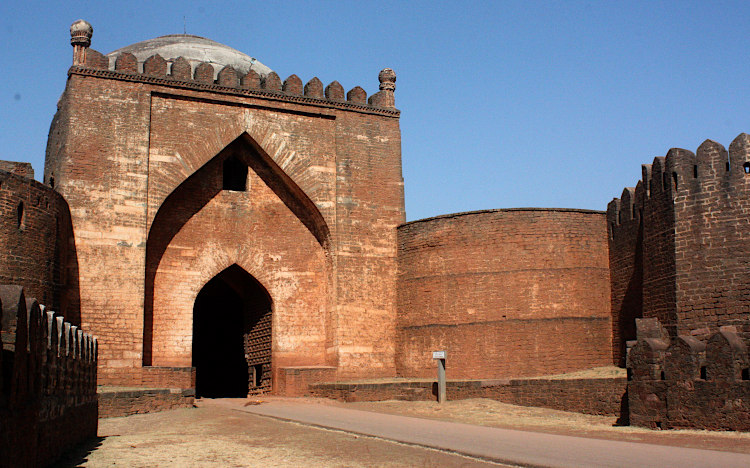
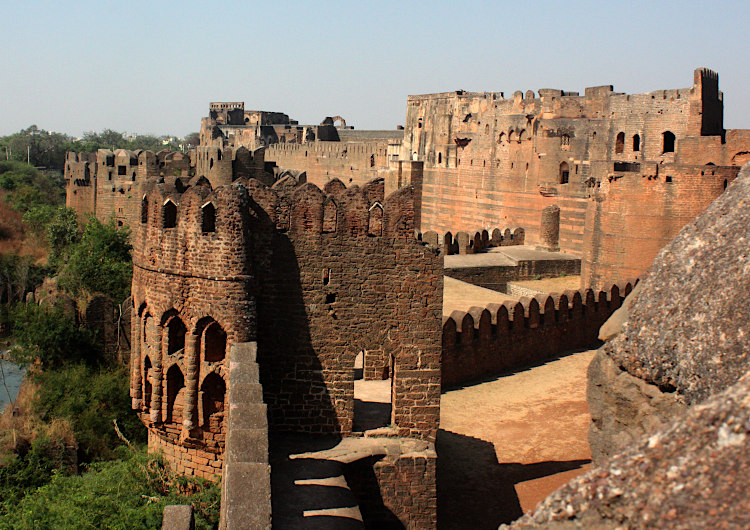
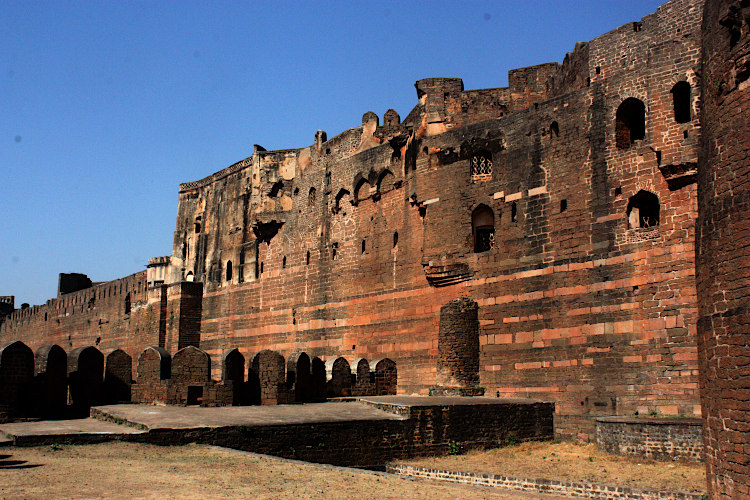
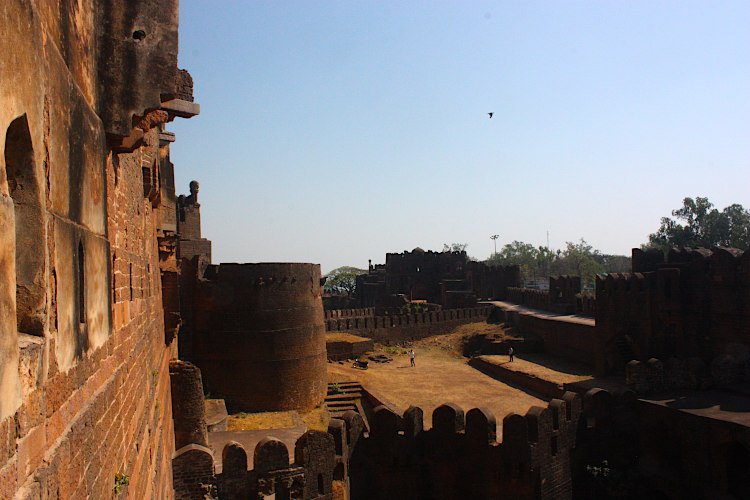
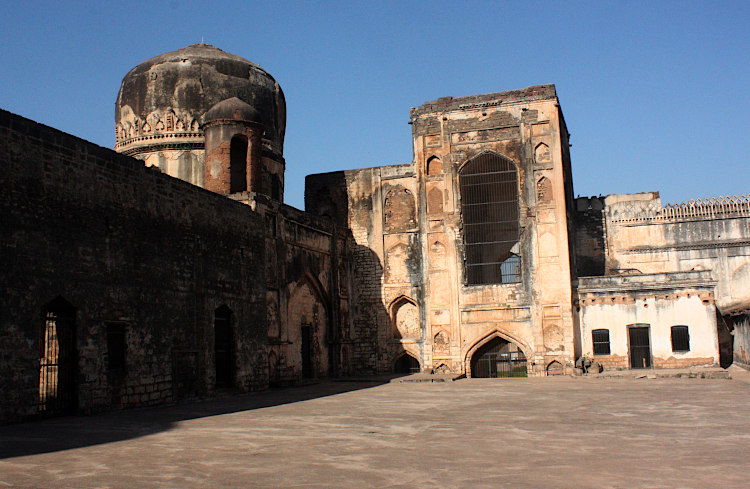
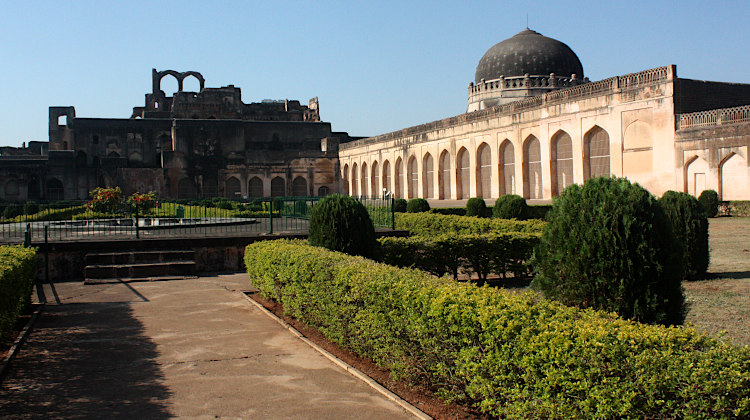
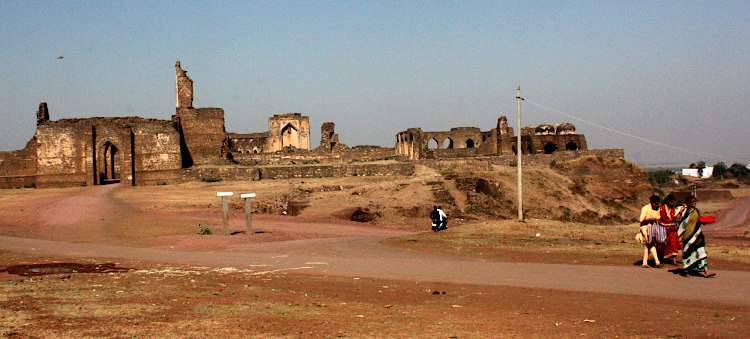
After wandering to the more remote areas of the fort, I returned to the Rangeen Mahal by the main gate. By this time a few more visitors had arrived, including a school party of muslim girls completely covered from head to foot. All Indians of course except for one. I was intrigued to see a Sikh, easily spotted with his turban but a rarity in these parts. As it happened he was British! He was born to Indian parents in East Africa who emigrated to the UK. He was here mainly to visit the Guru Nanak Jhira Sahib a famous Sikh shrine. Unfortunately I didn’t have time to visit it and I didn’t see any other Sikhs in my time in Bidar.
However, I did find the watchman who had the key to the Rangeen Mahal. Meaning the multicoloured palace, it is easily the best preserved building in the fort and well worth a look around. It has some superbly carved wooden beams and brackets and intricate plasterwork as well as mother of pearl inlay.
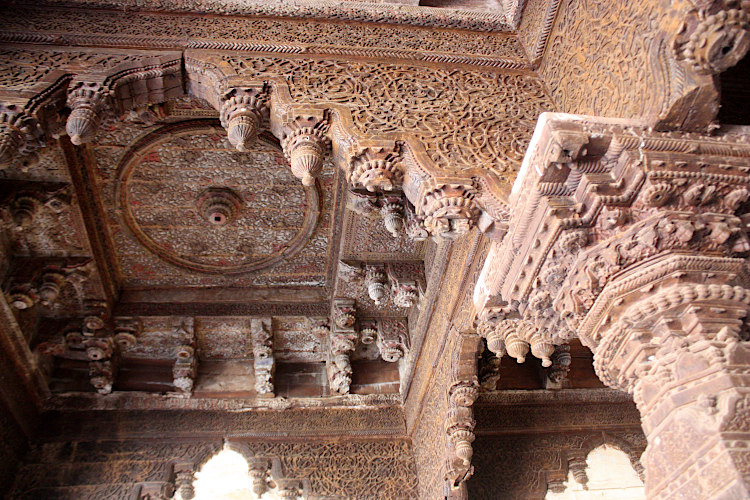
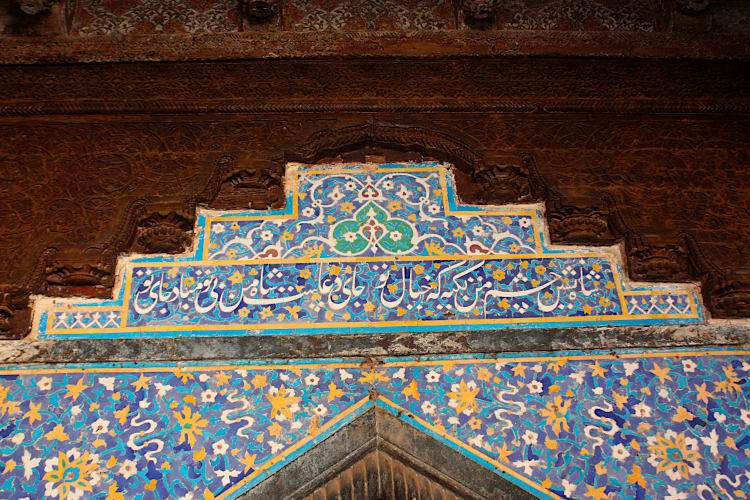
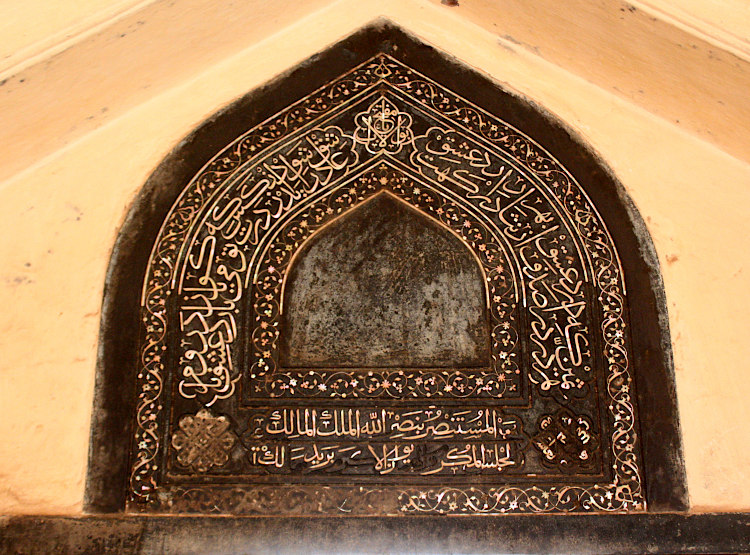
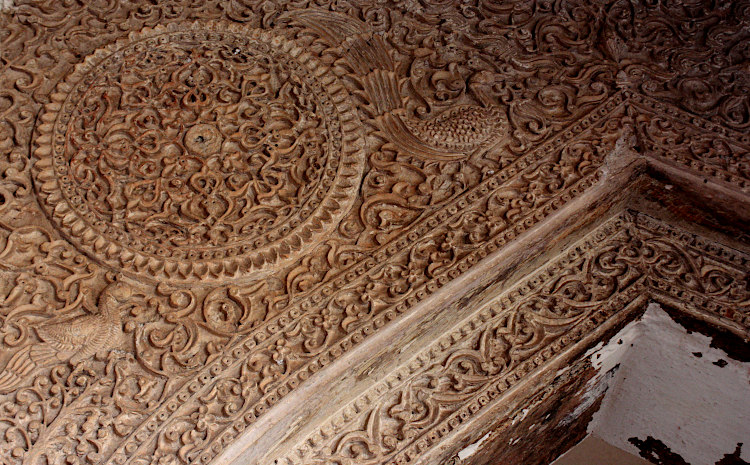

Leaving the fort, I headed south into the old town. The most important building in town is the Madrassa of Mahmood Gawan, built in 1460s. Gawan was the Persian Prime Minister of the Bahmani Sultanate and it is obviously Persian in style – the only building of its kind I think in India, certainly a rarity. The tiles were exquisite. The caretaker found me quite quickly and escorted me to the roof for a few rupees where there were great views of the town.
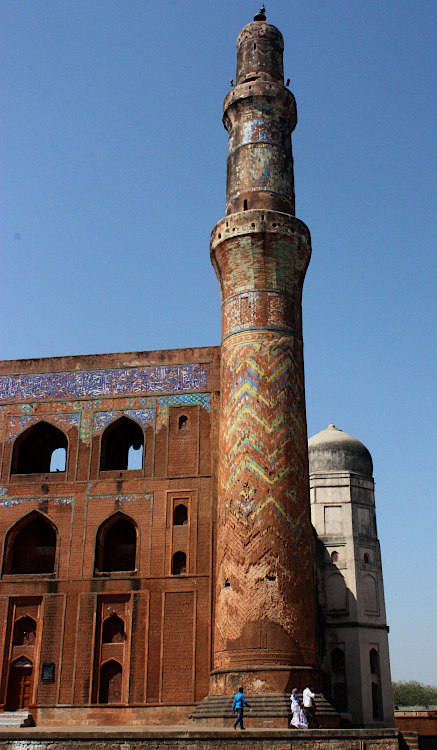
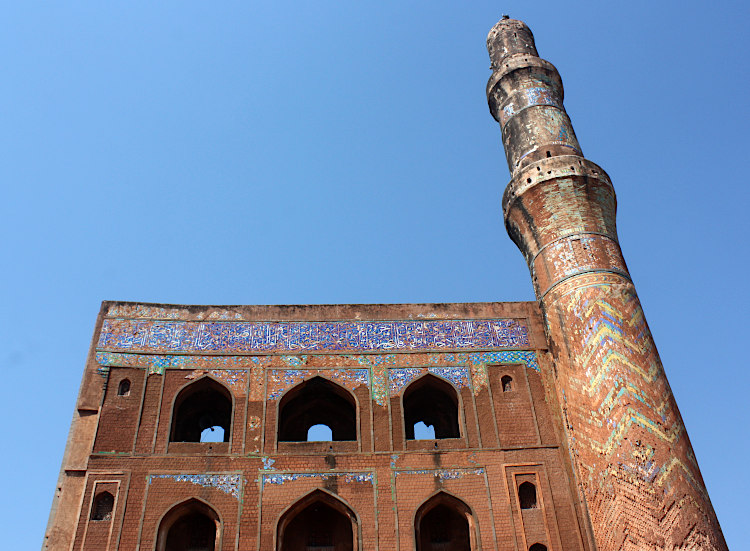

The old town was still fairly quiet until I found the main drag, “Main Road”. Here are some new mates I found at a tea shop who insisted I take a photo of them.

One of the other famous monuments in town is the Chaubara watchtower, or now, clock tower.
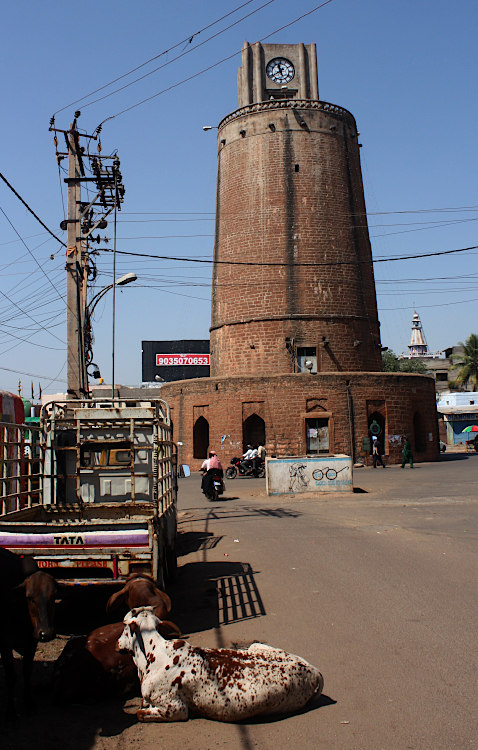
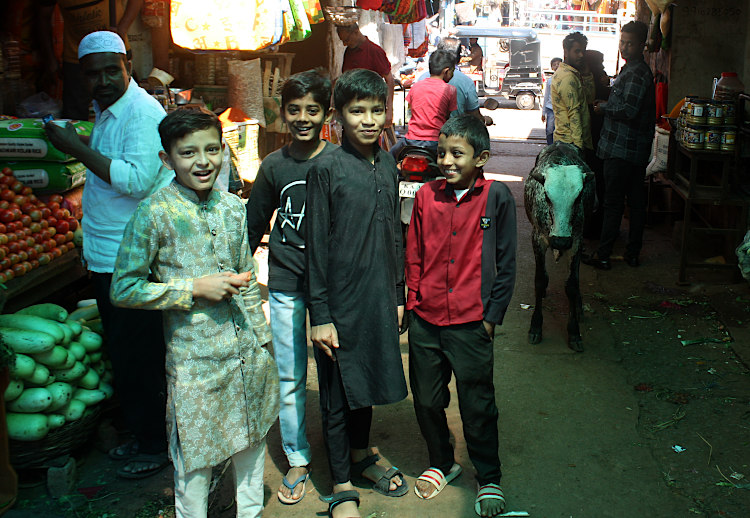
There are also a few gates to the old city still standing.
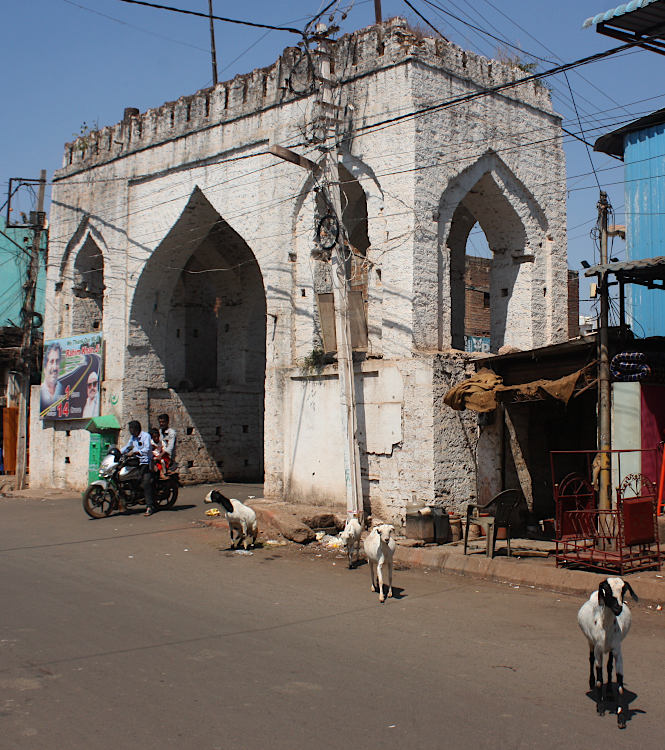
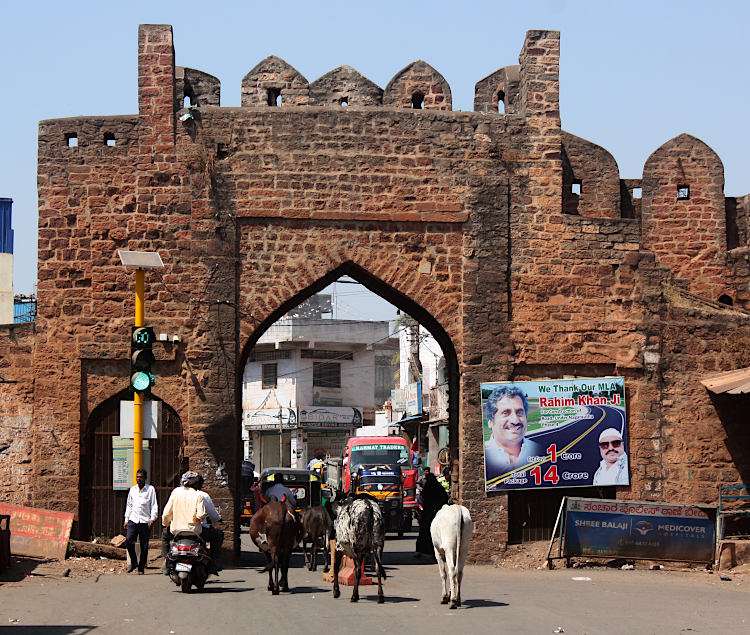
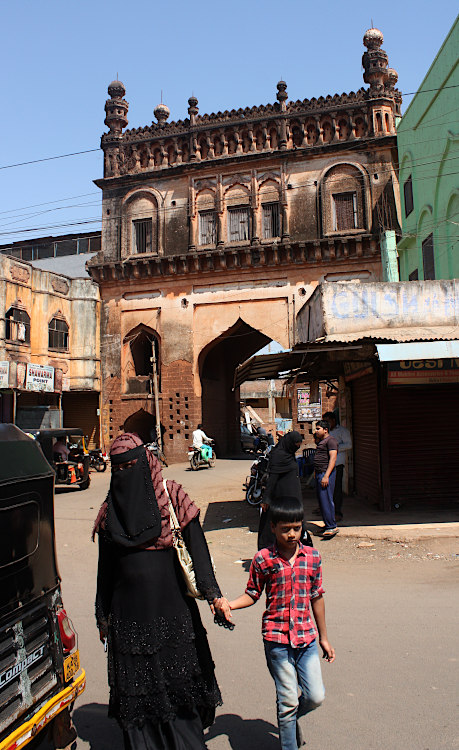
More photos of the Madrasa of Mahmud Gawan
After a siesta to avoid the mid day sun I headed out of town to the nearby village of Ashtoor to find the tombs of the Bahmani Sultans. The Bahmanis ruled most of the Deccan plateau in the 14th and 15th centuries before their sultanate splintered into a number of smaller sultanates including the Baridis whose tombs I had seen the previous day. As befitting a much bigger and more important dynasty these are far more impressive. The tomb below is actually the oldest and best preserved, that of Ahmed I and dates from 1436. The painted interior is particularly fine but unfortunately rather spoiled by some later paint splattering.
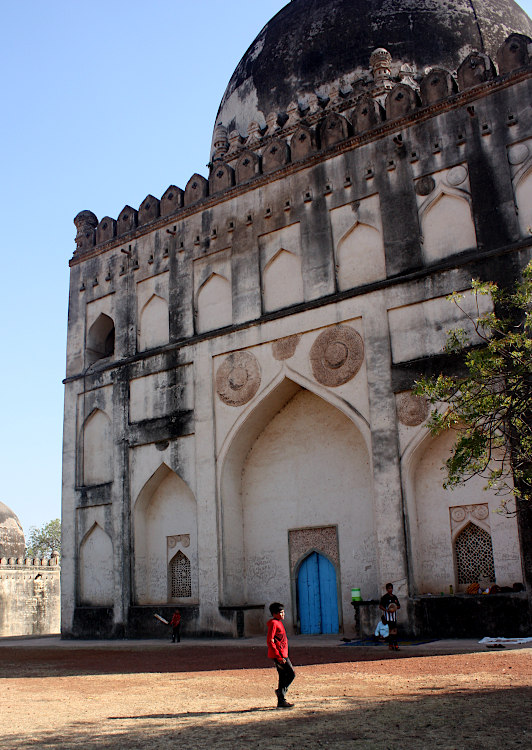
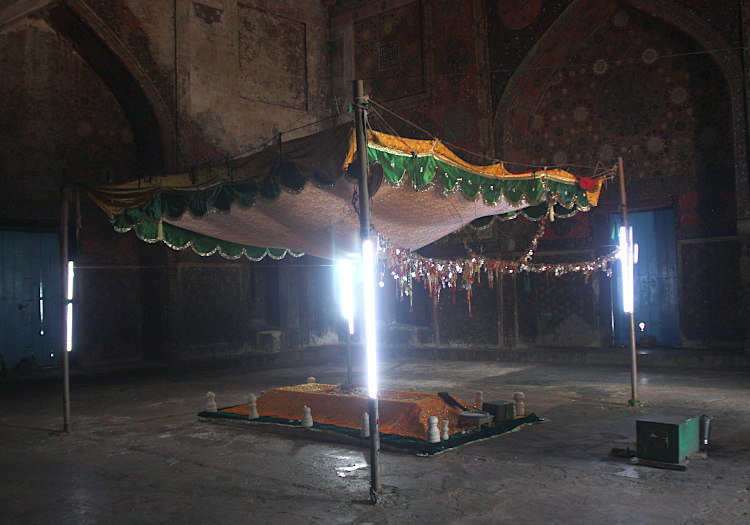



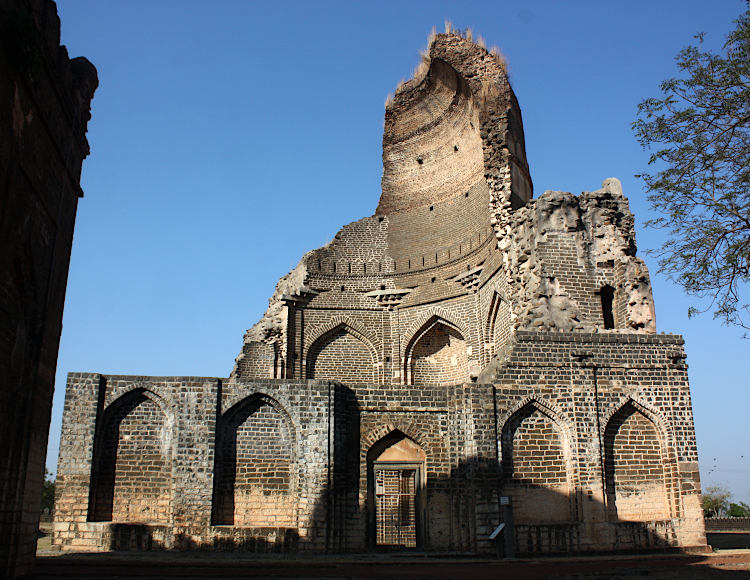
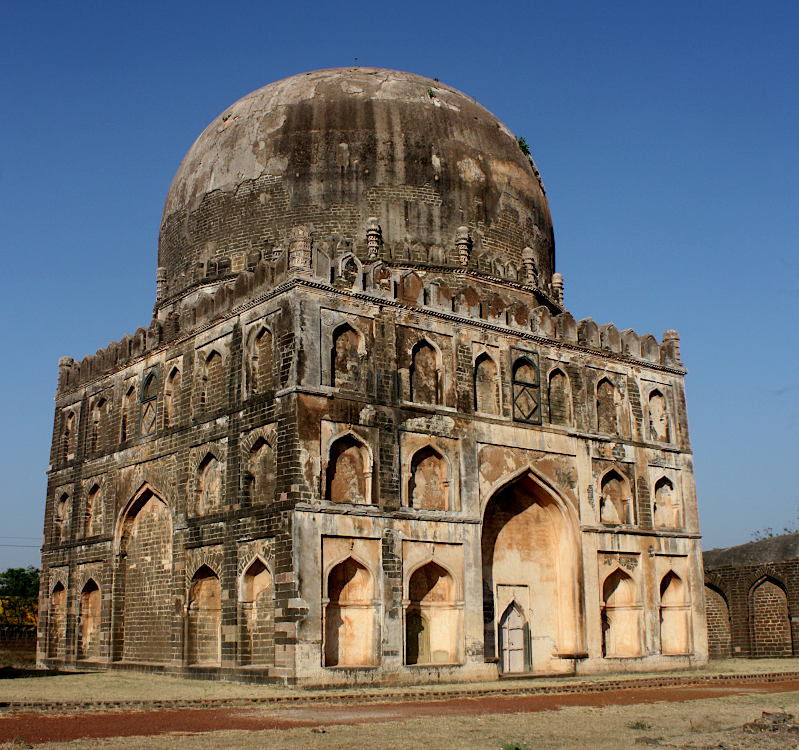
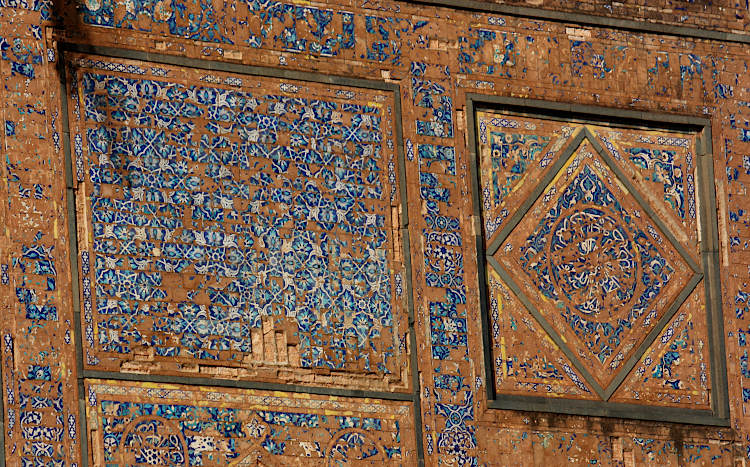
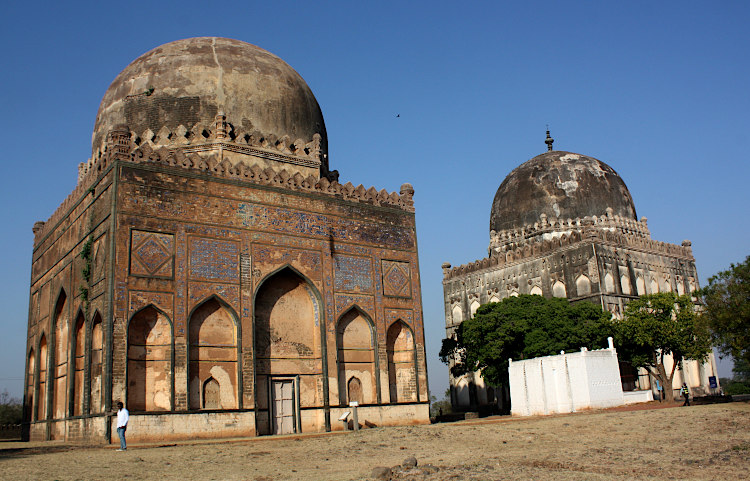
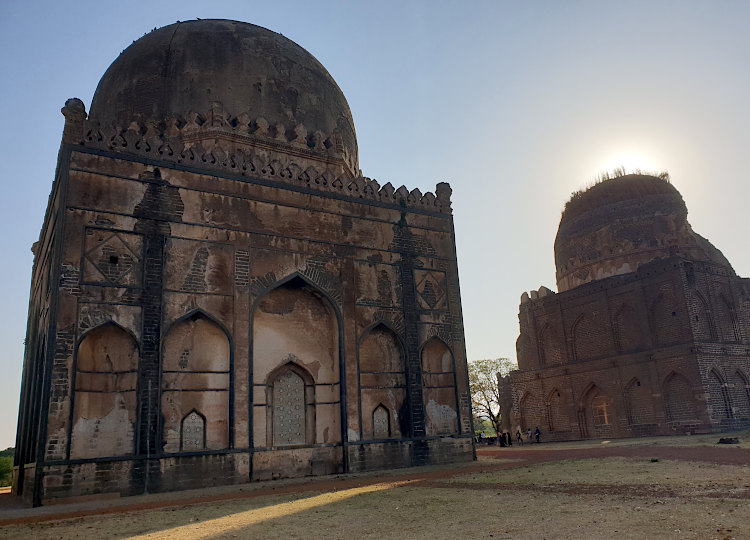
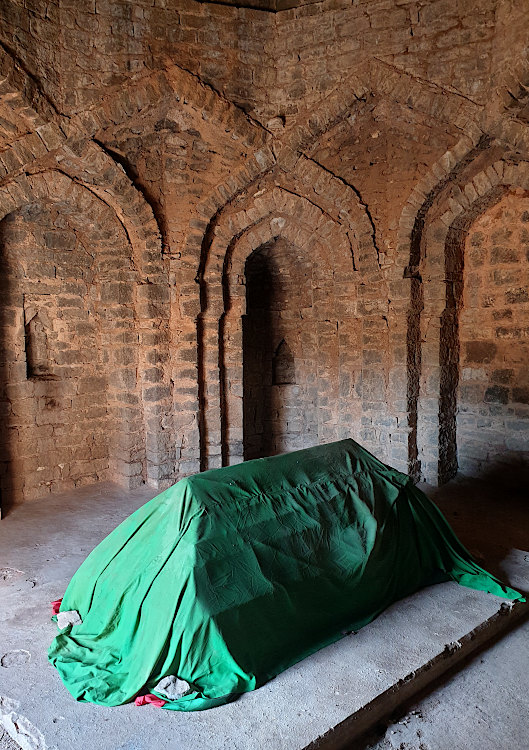
On the way to the tombs I had noticed a strange octagonal building a kilometre or so away so had to investigate further. It is the Dargah Hazrat Khalil Ullah Kirmani. Supposedly it is the tomb of a Sufi saint and also dates from the Bahmani period. In contrast to the main tombs, this place is obviously highly revered as a pilgrimage site and there were a number of people, mainly women, praying at the tomb of the saint which was surrounded by other smaller graves, presumably his closest followers.

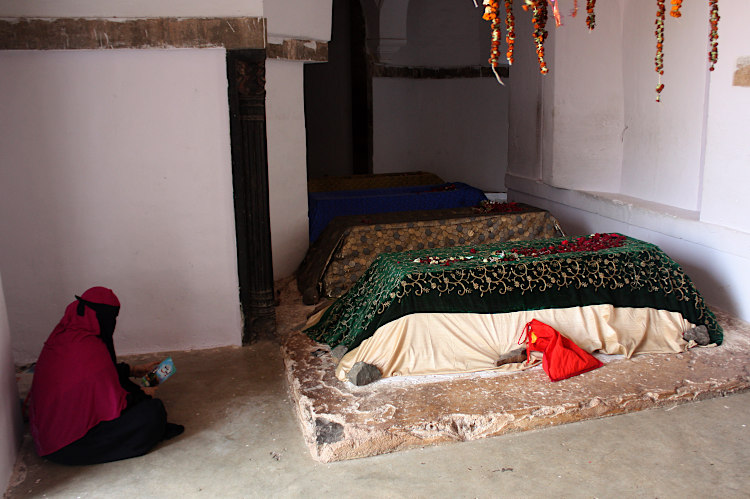
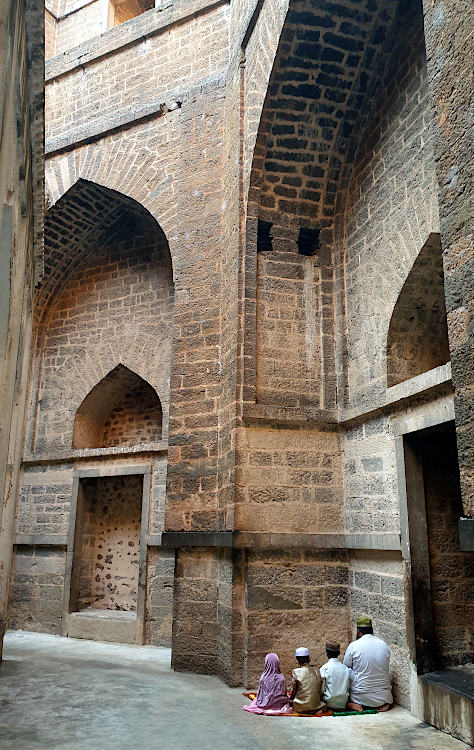
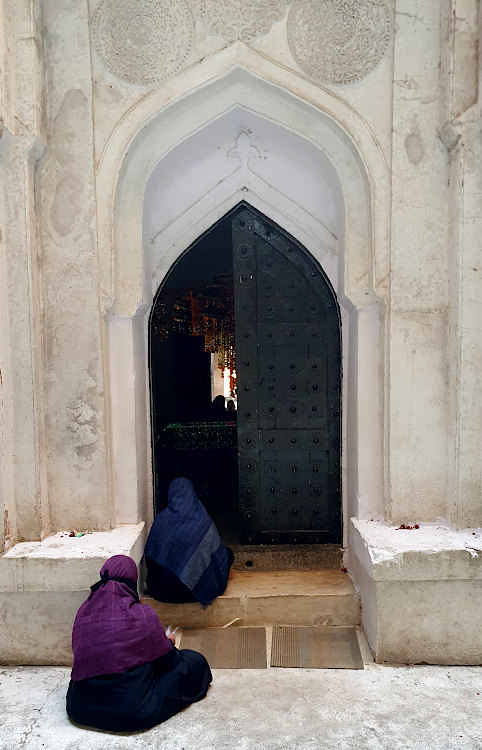
A few more photos of around town, including some grapes which are grown around town and the compulsory photo of one of my meals, a cheese curry (very popular in these parts)
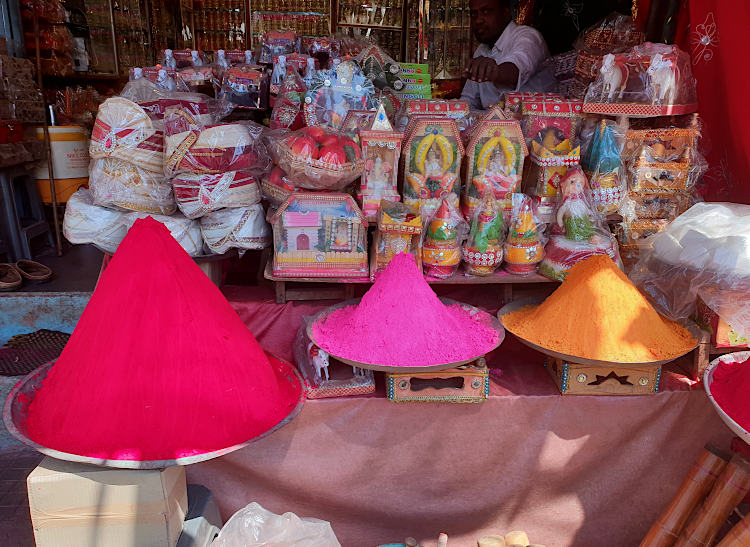
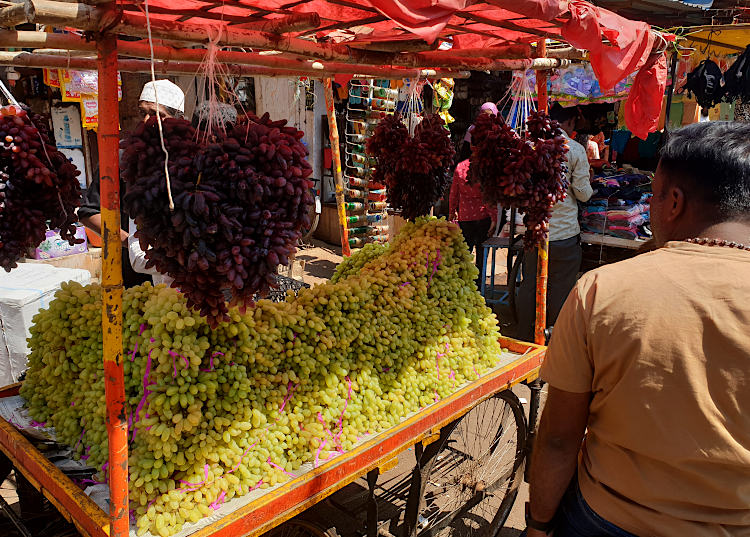
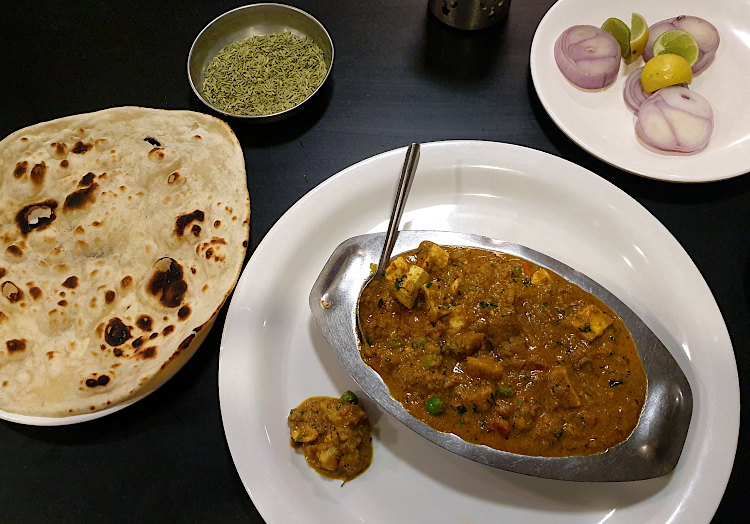


Map of the journey